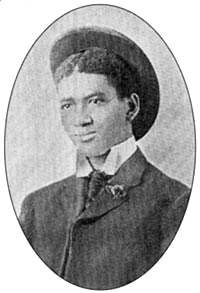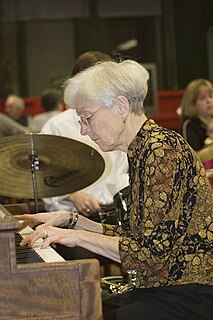
Scott Joplin was an American composer and pianist. Joplin achieved fame for his ragtime compositions and was dubbed the King of Ragtime. During his brief career, he wrote 44 original ragtime pieces, one ragtime ballet, and two operas. One of his first and most popular pieces, the "Maple Leaf Rag", became ragtime's first and most influential hit, and has been recognized as the archetypal rag.

Joseph Francis Lamb was an American composer of ragtime music. Lamb, of Irish descent, was the only non-African American of the "Big Three" composers of classical ragtime, the other two being Scott Joplin and James Scott. The ragtime of Joseph Lamb ranges from standard popular fare to complex and highly engaging. His use of long phrases was influenced by classical works he had learned from his sister and others while growing up, but his sense of structure was potentially derived from his study of Joplin's piano rags. By the time he added some polish to his later works in the 1950s, Lamb had mastered the classic rag genre in a way that almost no other composer was able to approach at that time, and continued to play it passably as well, as evidenced by at least two separate recordings done in his home, as well as a few recorded interviews.

James Sylvester Scott was an African-American ragtime composer and pianist, regarded as one of the three most important composers of classic ragtime, along with Scott Joplin and Joseph Lamb.

Benjamin Robertson "Ben" Harney was an American songwriter, entertainer, and pioneer of ragtime music. His 1895 composition "You've Been a Good Old Wagon but You Done Broke Down" is regarded as among the earliest, if not the earliest, ragtime composition. Though now probably more associated with Scott Joplin, in 1924 the New York Times wrote that Ben Harney "probably did more to popularize ragtime than any other person." Time Magazine termed him "Ragtime's Father" in 1938.

The "Maple Leaf Rag" is an early ragtime musical composition for piano composed by Scott Joplin. It was one of Joplin's early works, and became the model for ragtime compositions by subsequent composers. It is one of the most famous of all ragtime pieces. As a result Joplin was called the "King of Ragtime". The piece gave Joplin a steady if unspectacular income for the rest of his life.
Thomas Million John Turpin was an African-American composer of ragtime music.

Charles Leslie Johnson was an American composer of ragtime and popular music. He was born in Kansas City, Kansas, died in Kansas City, Missouri, and lived his entire life in those two cities. He published over 300 songs in his life, nearly 40 of them ragtime compositions such as "Doc Brown’s Cakewalk", "Dill Pickles", "Apple Jack ", and "Snookums Rag". His best selling piece, a sentimental ballad called "Sweet and Low", sold over a million copies. Experts believe that had Johnson lived and worked in New York, he would be included alongside Scott Joplin, James Scott, and Joseph Lamb as one of the greatest ragtime composers. He wrote more than the other three combined and exemplified a greater range of talent, composing waltzes, tangos, cakewalks, marches, novelty pieces, and other types of music popular at that time.
Percy Wenrich was a United States composer of ragtime and popular music.
Etilmon Justus Stark was an American ragtime composer and arranger, the eldest son of ragtime publisher John Stark. His best-known work includes the rag time pieces "Trombone Johnsen" (1902), "Billiken Rag" (1913), and "Gum Shoe" (1917), and the arrangements for the collection "Fifteen Standard High Class Rags" (1912).

"The Entertainer" is a 1902 classic piano rag written by Scott Joplin. It was sold first as sheet music, and in the 1910s as piano rolls that would play on player pianos. The first recording was by blues and ragtime musicians, the Blue Boys in 1928, played on mandolin and guitar.
William Hugh Albright was an American composer, pianist and organist.

The Carol Lou Trio was a jazz combo which gained modest popularity in the mid-eastern United States between the 1950s and 1970s, and international distribution of its few recordings. The group was headed by Carol Lou Hedges, whose modest demeanor belied her piano virtuosity and swinging style. Husband and bassist John Hedges was the other permanent member of the group, with various drummers having been employed, including future drummer for the Count Basie band and Tony Bennett, Harold Jones (drummer) in 1956-57. The trio's reputation spread mostly by word of mouth, but it did release several singles and one album.

Fred Van Eps was a noted banjoist and banjo maker. The "Van Eps Recording Banjo" was a well-known model until 1930. He was the father of jazz guitarist George Van Eps.

"Weeping Willow" is a 1903 classic piano ragtime composition by Scott Joplin. It was one of Joplin's simpler and less famous ragtime scores, written during a transitional period in his life, and one of the few pieces that Joplin cut as a piano roll in a 1916 session.

"Livery Stable Blues" is a jazz composition copyrighted by Ray Lopez (né Raymond Edward Lopez; 1889–1979) and Alcide Nunez in 1917. It was recorded by the Original Dixieland Jass Band on February 26, 1917, and, with the A side "Dixieland Jass Band One-Step" or "Dixie Jass Band One-Step", became widely acknowledged as the first jazz recording commercially released. It was recorded by the Victor Talking Machine Company in New York City at its studio at 46 West 38th Street on the 12th floor – the top floor.
Trebor Jay Tichenor was a recognized authority on Scott Joplin and the ragtime era. He collected and published others' ragtime piano compositions and composed his own. He authored books about ragtime, and both on his own and as a member of The St. Louis Ragtimers, became a widely known ragtime pianist.
Adaline Shepherd was an American composer of piano pieces. Though she did not compose many pieces, the pieces she composed were popular. In her twenties, she composed three ragtime pieces: Pickles and Peppers (1906), Wireless Rag (1909), and Live Wires Rag (1910). Commemorating World War I, she also published a Victory March (1918). She married Frederick Sherman Olson in 1910, and thereafter used his last name as her own.











